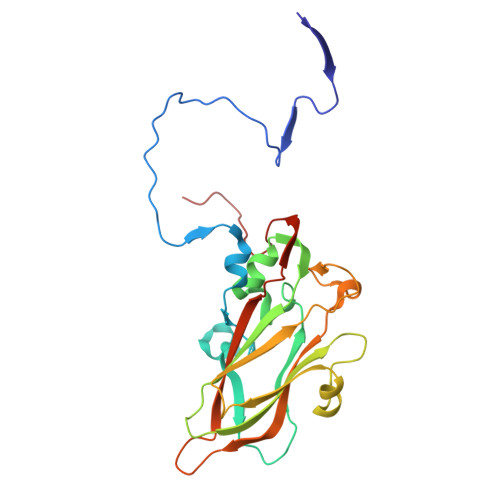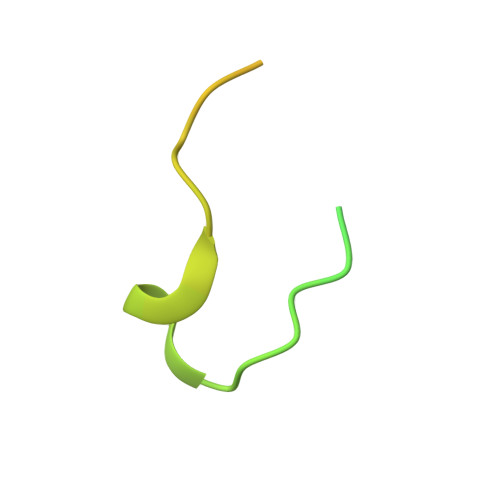Coxsackie B1 virus-like particle vaccine modified to exclude a highly conserved immunoreactive region from the capsid induces potent neutralizing antibodies and protects against infection in mice.
Soppela, S., Gonzalez-Rodriguez, M., Stone, V.M., Mustonen, I., Jouppila, N.V.V., Lampinen, V., Haikarainen, T., Flodstrom-Tullberg, M., Junttila, I.S., Hankaniemi, M.M.(2025) J Biomed Sci 32: 86-86
- PubMed: 40922007
- DOI: https://doi.org/10.1186/s12929-025-01183-1
- Primary Citation of Related Structures:
9SCW - PubMed Abstract:
Enteroviruses, including Coxsackie B (CVB) viruses, can cause severe diseases such as myocarditis, pancreatitis, and meningitis. Vaccines can prevent these complications, but conserved non-neutralizing epitopes in the viral capsid may limit their effectiveness. The immunodominant PALXAXETG motif, located in the VP1 N-terminus, is a highly conserved region in enteroviruses that elicits non-neutralizing antibody responses. Virus-like particles (VLPs) offer a safe and effective vaccine platform because of their structural similarity to native viruses but lack viral genetic material. Importantly, VLPs can be structurally modified to exclude specific epitopes. Here, we produced a modified CVB1 virus-like particle (VLP) vaccine lacking 15 amino acids from the PALXAXETG motif (designated VLPΔpalxa) using the baculovirus-insect cell expression system. To confirm the structural integrity, we determined the crystal structure of the modified VLP with 3.2 Å resolution. We then conducted comprehensive immunogenicity studies in mice, including dose titration, comparison of two versus three immunizations, and post-vaccination viral challenge. In addition, we evaluated the impact of the AS04 adjuvant on the immunogenicity of unmodified and modified CVB1-VLP vaccines and the formalin-inactivated CVB1 vaccine. The yield of CVB1-VLPΔpalxa was 29.5 mg/L, and the particles were shown to assemble similarly to unmodified CVB1-VLP. CVB1-VLPΔpalxa induced robust antibody responses, with neutralizing antibody titres comparable to or exceeding those elicited by unmodified VLP or inactivated virus vaccines. A 2 µg dose was identified as optimal, providing the highest neutralizing antibody titres. A third immunization significantly increased antibody levels, and all non-adjuvanted vaccines protected the mice from CVB1 challenge after the third dose. The addition of AS04 significantly enhanced the antibody response, particularly in both VLP groups. We demonstrated that with targeted structural modification of the CVB1-VLP capsid, immunodominant antibody responses against the conserved PALXAXETG motif can be avoided. We demonstrate that structural modification of CVB1-VLP is a viable strategy. Since the deleted epitope is known to be non-neutralizing, its deletion may help focus the immune response on more protective targets and thereby improve vaccine efficacy. The modified VLPs, particularly when adjuvanted, offer a promising approach for developing safe and effective enterovirus vaccines.
- Virology and Vaccine Immunology, Faculty of Medicine and Health Technology, Tampere University, Tampere, Finland.
Organizational Affiliation:




















